After the year we all just had, we wouldn’t blame you for never wanting to hear the word “isolation” again. Ever.
But wait! What if we paired “isolation” with “camp”, and promised that this curious merger would result in a fulfilling experience of creative companionship? What if we said it would be a socially and artistically productive getaway, a way to disconnect from frenetic urban rhythms and the demands of everyday life? And what if we told you it would take place in a beautiful natural setting, to boot.
This is the idea behind Isolation Camp, a series of intimate retreats inviting artists and creatives to unplug from their devices, sequester themselves in a cabin in the Austrian Alps, and see what happens – artistically speaking. In the words of founder Tobias “Ludschi” Ludescher, it’s a “place free from societal norms and obligations, unaffected by the time frames of everyday life, the noise and pollution of the city.”
And it’s a success. 2020 marked the 10th anniversary of Isolation Camp, which was celebrated by showcasing the camp’s creative output across the years: in an exhibition of visual artworks created at camp, and in the release of an “Isolation Campilation” album featuring a selection of music performed and recorded at various camps since the adventure began.
We chat with Tobias to get the lowdown on what Isolation Camp is all about, and how it can help get the creative juices flowing – plus his tips on hosting your own artistic retreat.
How would you describe the Isolation Camp concept?
The idea is quite simple: Imagine an isolated location surrounded by nature, and occupied only by interesting people who you’ll spend your time with. In our case, these campers are artists of all sorts, from musicians to cooks. We meet to collaborate, spend quality time together and recharge our batteries.
Where did you get the idea for these camps?
From 2005-2013 I was the art director for Pirate Movie Production, whose ventures include the biggest snowboard film projects in Europe. We released a DVD that came out in the form of a 100-page art book filled with photos and artworks. A bunch of artistically talented friends helped me carry out this very special work of art, and my intention was to connect those masterful helpers together. That exact moment is when Isolation Camp was born.
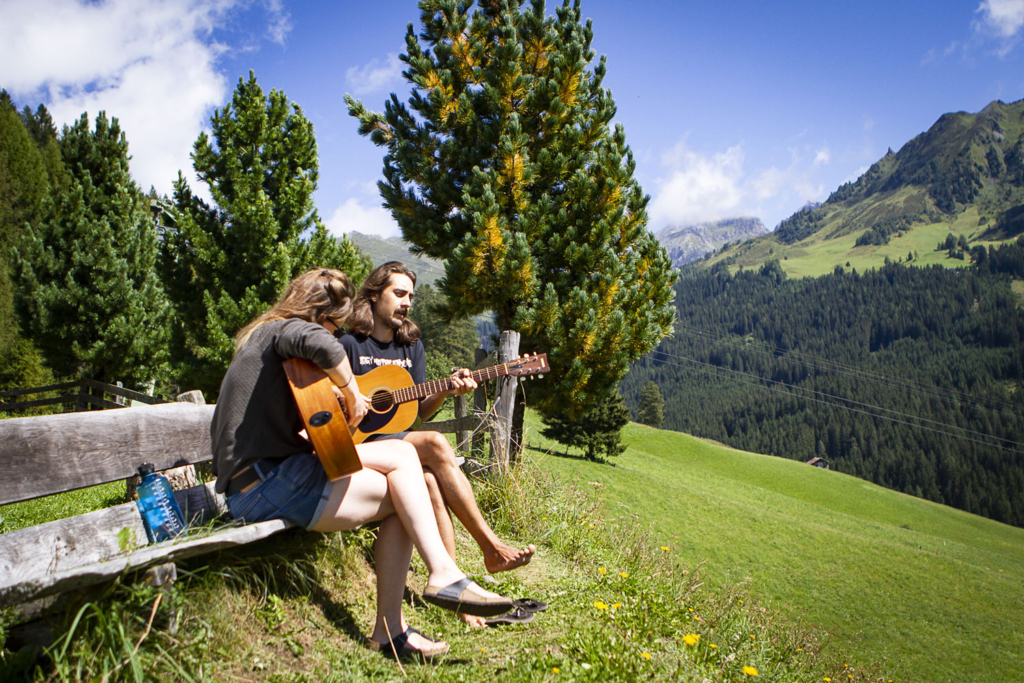
[Photo: Hubird/Wipptal/Tirol Photo Ludschi]
I rented a hut in Vorarlberg, Austria – the area I grew up in – and invited old friends of mine to join. There was no to-do list to complete, and everyone was absolutely free to do whatever they felt inspired to. It was also the beginning of quite a few new friendships, and the artistic outcome was much more productive than I could ever have imagined.
What makes these camps different from an ordinary weekend away among friends?
I would say the social and artistic inclination of the campers. The group is hand-selected for their creative interests and compatibility, this way we can almost guarantee a good time, without any egos challenging the harmony within the group. Everyone brings their own tools, so they can get down to work on whatever they get inspired to do, and only whenever they feel like it. It takes around three days to get into the groove, so it makes sense to spend more time than just a weekend. We select houses and cabins with enough space indoors, in case bad weather hits. (And yes, as much as it’s hard to admit, bad weather is an effective impetus for an artistic outcome!)
Can you share some tips for those who’d like to start their own creatively inclined isolation camp?
You should plan for your camp to last at least a week, to get into the Isolation Camp vibe. The first few days are usually spent adapting to the other campers and exploring the surrounding area, because everyone needs their own time to tune in.
You should rent a place without any neighbours around, but possibly with a forest close by, or perhaps a lake or mountains – in other words, any natural area where the call of the wild can help ignite your inspiration.
Do not forget to bring enough food, stay offline as much as you can, and only use your smartphone when truly necessary. Enjoy the simple life and appreciate each other’s company.
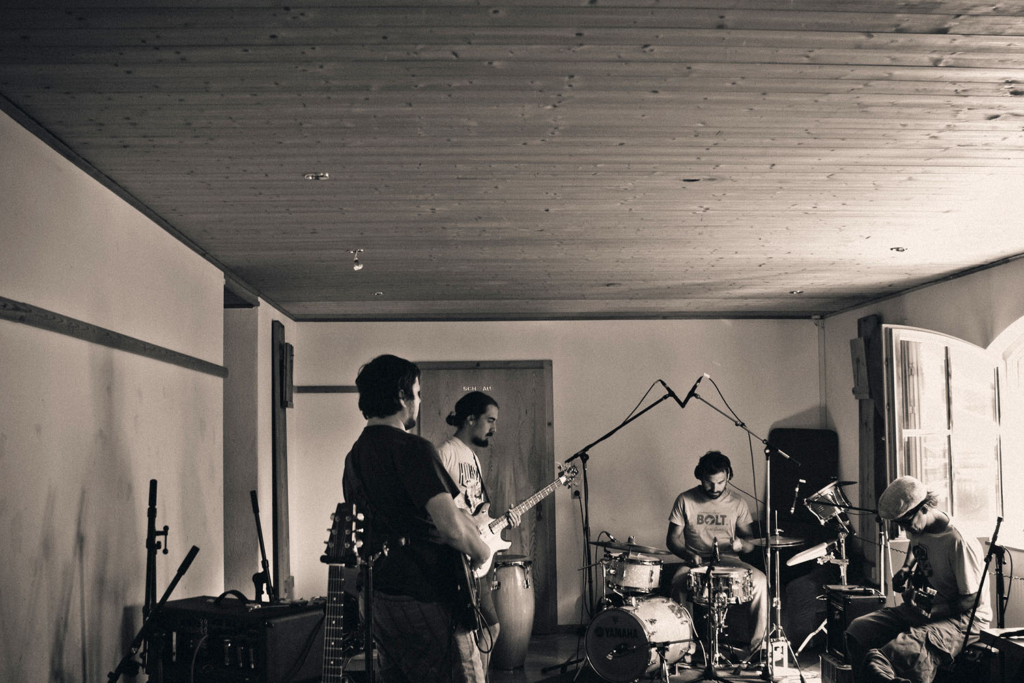
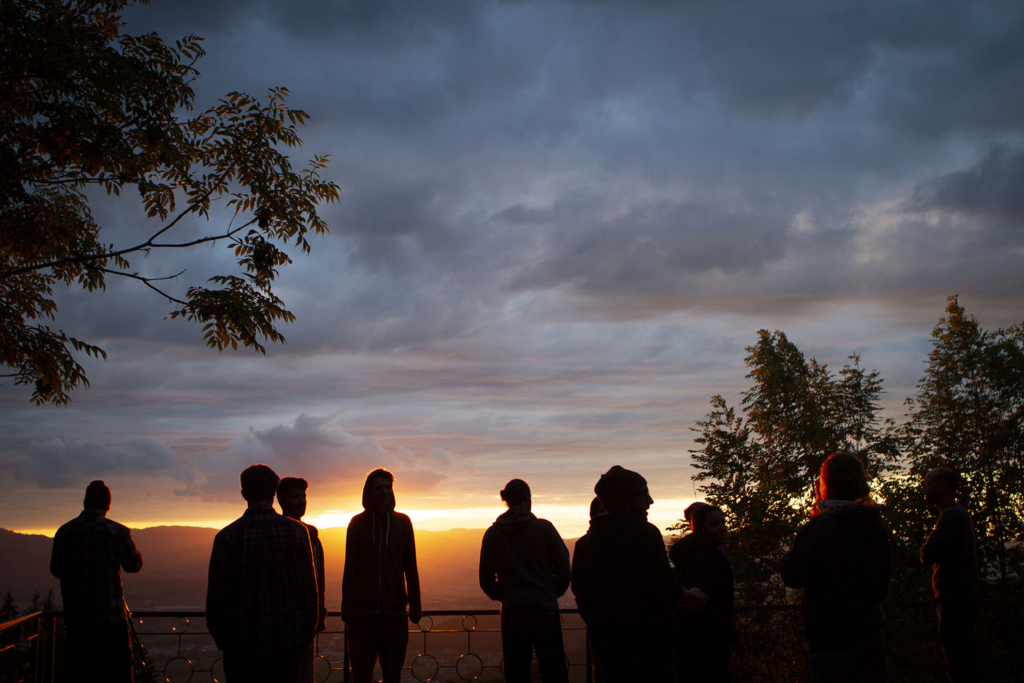
[Photo at left: Sonnenfluh/Lechtal/Tirol Photo Ludschi. Photo at right: Hammerer Stall/Vorarlberg Photo Ludschi]
How do you handle the preparation for the camp?
The first thing is determining the group size, and in this aspect, the house sets your limits. We’ve had sessions for more than 40 people, but also camps with only eight.
Once you know the capacity, you can plan further. As I mentioned earlier, our main way of selecting campers is double checking their social and artistic skills. Both skills are equally essential. We have a core group of 10 people who have attended since the beginning, but there are new faces at the camps every year. Because every regular camper who joined at least 2-3 sessions can bring their friends as well, our group is growing slowly but organically.
During the first eight years, I took care of all the organisational tasks, including bringing supplies and picking people up at the train stations. Two years ago, we founded the Alpine Art Culture Club, which takes care of the camps and art shows now, so there are at least two more campers helping me out with the whole process.
Give us three pros and three cons of being isolated with a group of artistic people.
Pros:
– always a good laugh
– never a dull moment
– inspiration flowing 24/7
Cons:
– you feel like drinking daily
– when artists make music
– when musicians make art!
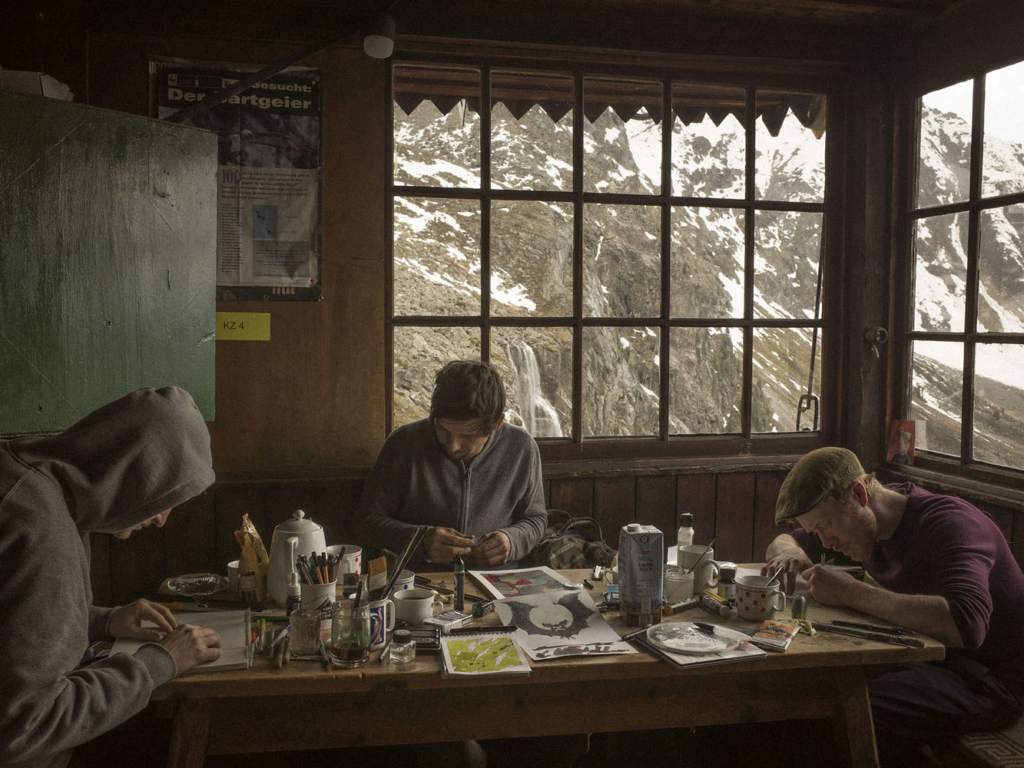
[Photo: Anton Renk/Tirol Photo Ludschi]
As one of the founders and original campers, we bet you have a lot of anecdotes and stories to share about Isolation Camp. Would you mind sharing one?
There was this great illustrator called Michael Hacker who grew up in the same area as I did, and though I knew who he was, we somehow never got to know each other. One day, when my plans of setting up the first camp were already deeply set in my mind, I saw him at the local train station. I pulled myself together and introduced myself properly. He seemed like a really nice fellow, and I spontaneously invited him to our session. It was just meant to be. He ‘clicked’ perfectly with my friends, and during the last decade we’ve become close buddies as well. He’s actually an important member behind the Alpine Art organisation, and he has been taking care of our finances for some time now.
What have you learned in your experiences organising and attending isolation camps?
Organising the camp is totally worth the effort. It’s the greatest feeling you can imagine when you see great collaborative artworks and music come together live, and you know that it’s only happening because of you. I definitely prefer a flat hierarchy over somebody constantly trying to stand out, but all would agree upon the fact that we always need somebody to make the initial effort to bring people together.
Why do you believe it’s important to carve out some time for creativity?
We are living in very busy times with too many inputs to process. Thanks to social media and the internet in general, we get easily and constantly distracted, and it’s getting harder and harder to just focus on ourselves, on the hic et nunc, aka the present that envelops us. That’s why it’s important to breathe out sometimes, to spend time surrounded by pure nature and leave your screens behind. Of course, we try to integrate this behaviour in our daily routines, but I can assure you that there’s absolutely nothing that comes close to the revitalising effect of an Isolation Camp.
[Photo at top: Hammerer Stall/Vorarlberg Photo]

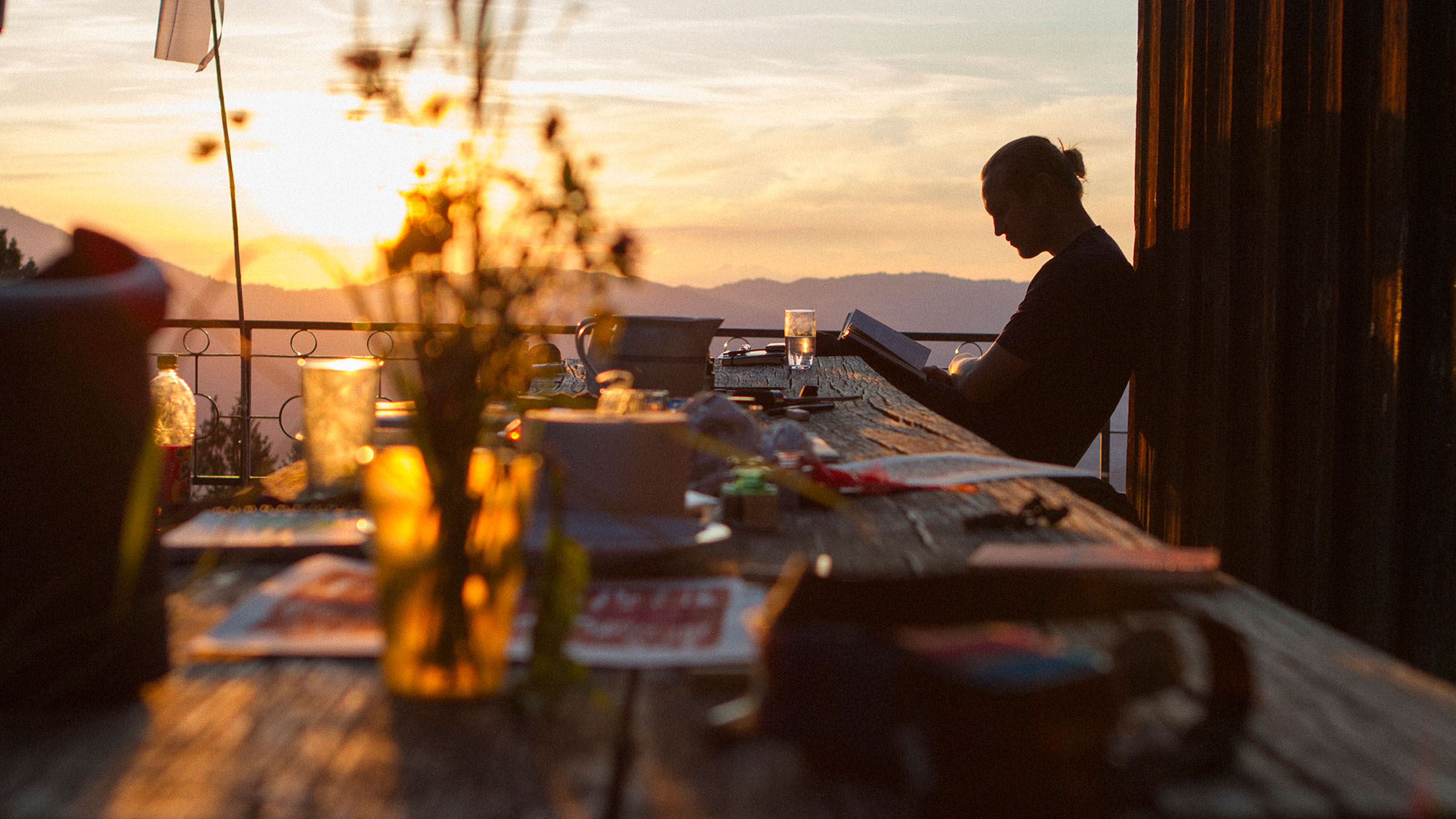
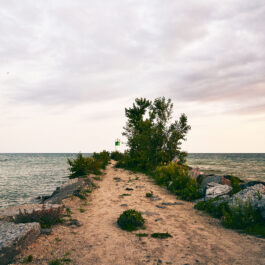


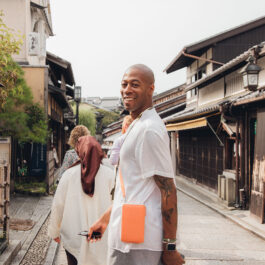
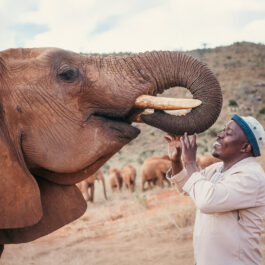

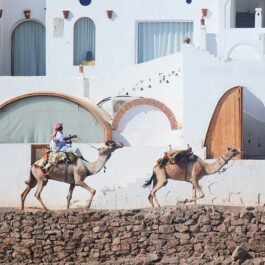
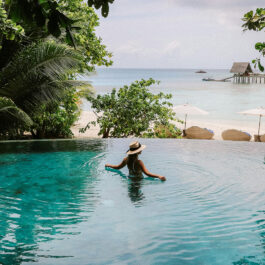
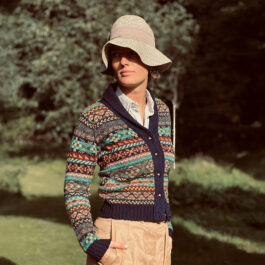
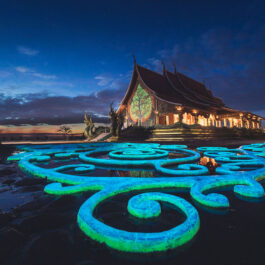
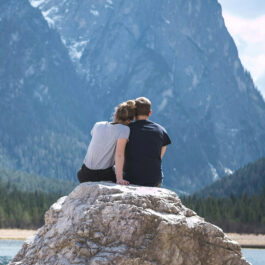

Sorry, the comment form is closed at this time.